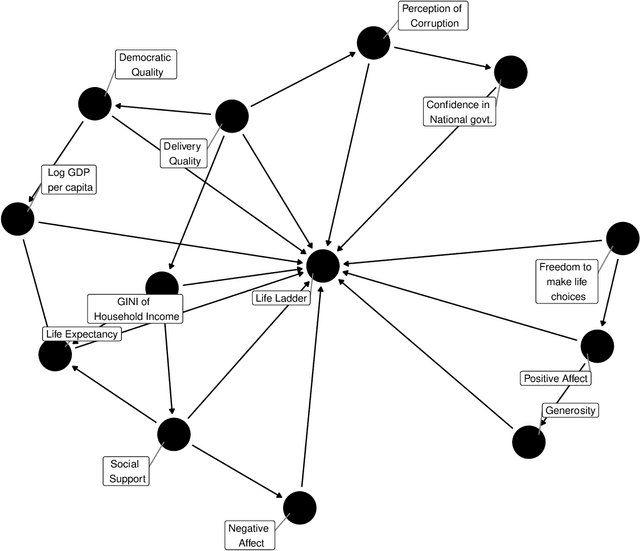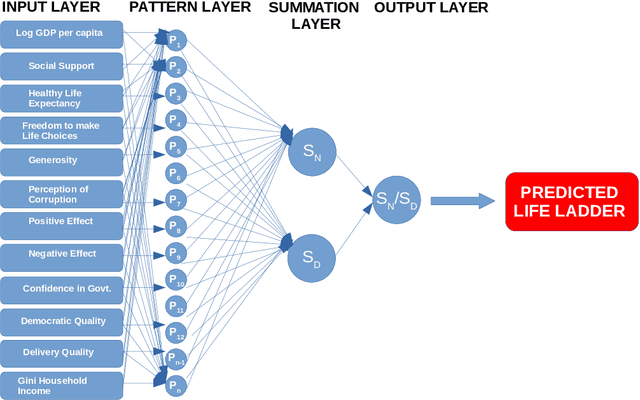Niteesh Sahni
Uncovering the hidden core-periphery structure in hyperbolic networks
Jun 28, 2024Abstract:The hyperbolic network models exhibit very fundamental and essential features, like small-worldness, scale-freeness, high-clustering coefficient, and community structure. In this paper, we comprehensively explore the presence of an important feature, the core-periphery structure, in the hyperbolic network models, which is often exhibited by real-world networks. We focused on well-known hyperbolic models such as popularity-similarity optimization model (PSO) and S1/H2 models and studied core-periphery structures using a well-established method that is based on standard random walk Markov chain model. The observed core-periphery centralization values indicate that the core-periphery structure can be very pronounced under certain conditions. We also validate our findings by statistically testing for the significance of the observed core-periphery structure in the network geometry. This study extends network science and reveals core-periphery insights applicable to various domains, enhancing network performance and resiliency in transportation and information systems.
Explaining Indian Stock Market through Geometry of Scale free Networks
Apr 06, 2024Abstract:This paper presents an analysis of the Indian stock market using a method based on embedding the network in a hyperbolic space using Machine learning techniques. We claim novelty on four counts. First, it is demonstrated that the hyperbolic clusters resemble the topological network communities more closely than the Euclidean clusters. Second, we are able to clearly distinguish between periods of market stability and volatility through a statistical analysis of hyperbolic distance and hyperbolic shortest path distance corresponding to the embedded network. Third, we demonstrate that using the modularity of the embedded network significant market changes can be spotted early. Lastly, the coalescent embedding is able to segregate the certain market sectors thereby underscoring its natural clustering ability.
Network Learning Approaches to study World Happiness
Jul 17, 2020



Abstract:The United Nations in its 2011 resolution declared the pursuit of happiness a fundamental human goal and proposed public and economic policies centered around happiness. In this paper we used 2 types of computational strategies viz. Predictive Modelling and Bayesian Networks (BNs) to model the processed historical happiness index data of 156 nations published by UN since 2012. We attacked the problem of prediction using General Regression Neural Networks (GRNNs) and show that it out performs other state of the art predictive models. To understand causal links amongst key features that have been proven to have a significant impact on world happiness, we first used a manual discretization scheme to discretize continuous variables into 3 levels viz. Low, Medium and High. A consensus World Happiness BN structure was then fixed after amalgamating information by learning 10000 different BNs using bootstrapping. Lastly, exact inference through conditional probability queries was used on this BN to unravel interesting relationships among the important features affecting happiness which would be useful in policy making.
 Add to Chrome
Add to Chrome Add to Firefox
Add to Firefox Add to Edge
Add to Edge